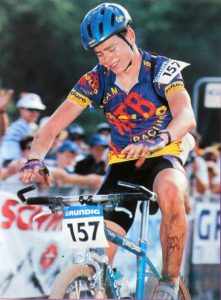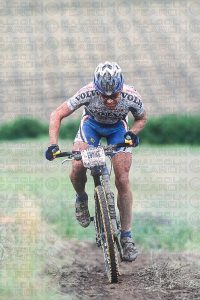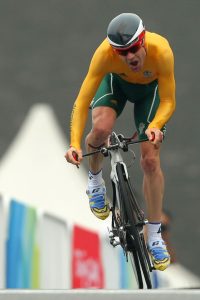The title of this post is a clear giveaway regarding my position on power meters for cycling and triathlon. If I was ambivalent about it I would have called the post ‘Should you train with a power meter?’ There are plenty of investments you can make in order to improve your cycling; but none will give you a better return on investment than a power meter (assuming you know how to use it and/or work with a coach who does).
I’m often ask how coaching for triathlon and cycling has changed over the past 25 years. The truth is, the foundation principles we work off have not changed that much. What have changed, are the tools available to monitor training and performance. My first exposure to power meters was in the 1990s when I was working at the AIS. Back then cyclists didn’t have power meters on their bikes. We had one power meter in the lab which many still consider the gold standard; the SRM training system.
The cyclists used to come in for periodic testing when they were in Canberra for training camps. We couldn’t monitor performance in training or competition, just the laboratory. You never really knew what you were going to get when the athletes turned up. I remember being in the lab one day in the late 1990s when a great rider by the name of Cadel Evans came in for testing. He had been away on a heavy training block for a few months, and it was at the time when he was in the transition from being a mountain biker to a road cyclist. He had been doing both for a number of years. I can remember our lead cycling physiologist telling me he was excited to be doing the testing as he knew Cadel had lost a lot of weight on the training camp and he was looking forward to ‘seeing the numbers’.
Well, didn’t we see some numbers! I still have a picture in my head of the physiologists jumping up and down in the lab with excitement. It was my first exposure to the value of power meters and remains with me. He kept saying ‘his absolute power is the same, but his power to weight is through the roof’. And it is still the same today – this metric is a key predictor of success in cycling.
The difference today is that we have access to this technology at an affordable price. This means we can monitor performance and training load in both training and competition on an ongoing basis. As coaches, our ability to adjust training load to ensure we get maximal gains in performance from the time available to train has become much better.
This of course does not diminish the importance of sticking to training fundamentals. There are two I harp on about all the time – consistency and specificity. If you are consistent and specific then you will improve. A power meter gives you the opportunity to leverage this better. You need the right amount of training for adaptation, PLUS the right amount of recovery. This requires us being able to quantify training load. The bottom line is a necessity for some measure of the overall training load, because you need to ensure the ‘stimulation’ is not too much or too little. Power meters allow us a far more accurate way of doing this when compared to other metrics such as heart rate.
Heart rate is affected by many factors – hydration/nutrition, the environment (temperature), illness, fatigue, sleep, and /or stages of the training cycle. When I am looking at a TrainingPeaks file for an athlete who does not have a power meter I am not really sure what I am looking at. Are they tired, was there a headwind, is this dehydration I am seeing at the end of the ride? Heart rate will fluctuate with all these factors. But power is power. The number you see is what the athlete is actually doing.
Of course you have to know what you are doing with the metrics that a power meter gives you. Understanding your threshold (FTP), how training zones work (remember these are continuous and should be descriptive, not prescriptive) and periodisation are all key factors. What power can tell you when used in combination with heart rate and cadence is also invaluable.
Oh, and a quick reminder that it is not all about the numbers. The metrics are aids to us as athletes and coaches, and help us train in a smarter fashion. But listening to your body, training on ‘feel’ and communicating with your coach are all also part of the equation that leads to performance improvement.
I’ll cover off these areas in future blog posts. But if I have done enough to convince you now to invest in a power meter then the next question you may ask is ‘which one should I get?’. I’m going to handball this one over. I’m no expert in which power meter you should buy as there are a number of factors to consider. Head on over and read this post from DC Rainmaker, he’s the guru in this area.



0 Comments